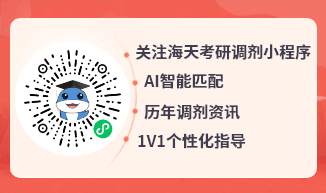考研英语阅读经典试题及答案3
暑假已经结束,考研的复习还未结束。同学们在新学期更要努力备考,掌握知识点和技巧。海天考研小编为同学们整理了考研英语经典的阅读练习题,希望对同学们的复习有帮助。
One of the simplest and best known kinds of crystal is the ionic salt, of which a typical example is sodium chloride, or ordinary table salt. The fundamental components of an ionic salt are ions: atoms or molecules that have become electrically charged by gaining or losing one more electrons. In forming sodium chloride, for example, sodium atoms give up an electron (thereby becoming positively charged) and chlorine atoms gain an electron (thereby becoming negatively charged). The ions are attracted to one another by their opposite charges, and they stack together compactly, like tightly packed spheres.
Recently, scientists at Michigan State University created a new kind of crystal called an electride. In electrides, the anions (negative ions) are completely replaced by electrons, which are trapped in naturally formed cavities within a framework of regularly stacked cations (positive ions). Electrides are the first examples of ionic salts in which all these anionic sites are occupied solely by electrons.
Unlike other types of anions, anionic electrons do not behave as if they were simple charged spheres. In particular, because of their low mass and their tendency to interact with one another over great distances, they cannot be “pinned down” to any one location. Instead, they wander close to and among the atoms lining the cavity and interact with electrons in nearby cavities, perhaps changing places with them.
The properties of an electride depend largely on the distance between the cavities that hold trapped electrons. When the trapped electrons are far apart, they do not interact strongly, and so behave somewhat like an array of isolated negative charges. When they are closer together, they begin to display properties associated with large ensembles of identical particles. When they are still closer, the ensemble properties dominate and the electrons “delocalize”: they are no longer tightly bound within individual cavities but are more or less free to pass through the spaces within the framework of positive ions.
By synthesizing electrides from a variety of materials, one can vary the geometry of the anionic cavities and their relation to the surrounding cations. The resulting properties may make it possible for electrides to become a basis for economically useful new materials and devices. For instance, because the electrons in some electrides are very weakly bound, these crystals could be effective as photosensitive detectors, in which an impinging photon liberates an electron, resulting in a small electric current. The same weak binding could also make electrides useful in solar energy converters and as cathodes in batteries. One obstacle is the tendency of electrides to decompose through reaction with air and water. Researchers are seeking ways to increase their stability.
1. The text is primarily concerned with discussing
[A] a way to isolate electrons.
[B] the characteristics of a new kind of crystal.
[C] the structure of an ionic salt.
[D] commercial uses for electrides.
2. In the first paragraph, the author is primarily concerned with
[A] introducing a variant on the standard atomic theory.
[B] describing how chlorine atoms can become negatively charged.
[C] describing some early research at Michigan State University.
[D] providing background for the technical discussion to follow.
3. According to the text, the defining characteristic of an electride is which of the following?
[A] Its positive are of particularly low mass.
[B] Its ions possess identical electrical charges.
[C] It contains a framework of regularly stacked ions.
[D] Its negative ions consist solely of electrons.
4. It can be inferred from the text that anions behaving as “simple charged spheres” (line 2, paragraph 3) could be expected to
[A] readily lose electrons and become positively charged.
[B] move freely in and out of their cavities.
[C] respond to photons by liberating electrons.
[D] remain fixed relative to their cations.
5. With which of the following statements regarding electrides would the author most likely agree?
[A] They have proven themselves to be of great commercial value.
[B] Their future commercial value is promising but uncertain.
[C] They are interesting but of no practical value.
[D] They have commercial value mainly in solar energy applications.
[答案与考点解析]
1. 【答案】B
【考点解析】本题是一道中心主旨题。本文的中心主旨句在第二段的第一句,如果抓住了这句话并且联系每段的中心主旨句,就可得出本题的正确选项B。其实本文第二段就是在讲一种新的晶体的与众不同的“characteristics”(特点)。考生在解题时一定要首先找出全文的中心主旨句,并与上下文联系。
2. 【答案】D
【考点解析】这是一道段落关系题。从第二段到尾段是本文作者阐述其中心思想的段落。在展开中心思想之前,作者为中心思想的展开进行了铺垫(讲述一般晶体的特点),从而为第二段到尾段的陈述(讲述一种新晶体的特点)提供明确的对比。考生在解题时一定要注意段落之间的关系。
3. 【答案】D
【考点解析】这是一道审题定位题。题干中没有给出明确的审题定位信息。破解此题需要考生平时的阅读积累,这是一道较难的题目。题干中所涉及的是“the defining characteristic of an electride”(电子晶体的特点)。在第二段作者第一次在文章中谈到了“electride”,所以其特点也应该在第二段向读者交待,故本题的答案信息来源应该在第二段。综合第二段第二、三句的内容可推导出本题的正确选项D。考生在解题时一定要具备出色的审题定位能力。
4. 【答案】D
【考点解析】本题是一道句间关系与反推题。题干中的信息以将本题的答案信息确定在第三段。根据第三段所陈述的内容进行反推可得出本题的正确选项D。在进行反推时一定要注意第一句中的“do not behave as if…”以及第二句中的“cannot be pinned down”所起的作用。考生在解题时一定要具备反推即逆向推理的能力。
5. 【答案】B
【考点解析】这是一道审题定位题。本题的题干没有提供任何审题定位的信息。但是善于阅读的考生应该知道每篇文章尾段的重要性。在本题到来之前本文的尾段还没有涉及任何一道题,故考生应该首先从尾段中寻找本题的答案信息。尾段的第二句第四句表明新的晶体在商业方面的可利用性;尾段的第五句表明这种新的晶体的不足之处。可见本题的正确选项应该是B。考生在解题时一定要对文章结构以及出题点有所认识,最好对全文有整体的把握。
2025考研人数达388w,考研热度依旧火热!如何备战2026考研?哪个考研专业适合自己?在职考生如何备考?考研知识点繁多,择校困难大,和海天考研咨询老师聊一聊。网课面授多项选,专业辅导1对1,全年集训随时学!

上一篇:考研英语阅读经典试题及答案2
下一篇:考研英语阅读经典试题及答案4






